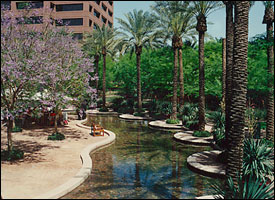~ Phoenix dactilifera ~
True Date Palm
Height: 50-60' Growth rate: Slow Climate zones: 8-17 to 18° Origin: North Africa
Phoenix dactilifera is the quintessential oasis palm. This palm is native to the great desert regions of North Africa including Algeria, Morocco, and Egypt growing wherever water can be found such as along rivers and streams, desert springs, or even subterranean sources which don't quite reach the dry desert surface but suffice to allow the palm to survive. One can only imagine the jubilation of many a desert traveler- hot, thirsty, and sometimes even near death- upon seeing a grove of these trees off in the distance. A grove of Date Palms in the middle of the desert is nothing short of a natural miracle meaning many things to these travelers: water; shade; rest; tranquility; food; life, and above all; hope. Humans quickly realized the utility of this tree and brought it into cultivation thousands of years ago. This plant is celebrated in ancient Egyptian hieroglyphics as well as throughout the Bible.
Phoenix dactilifera is a heat loving, pinnate, wind tolerant, stiff fronded palm which suckers when young, but eventually quits in older age. Foliage color varies from light lime green to silver blue. The True Date palm can reach an ultimate height of 50'-60'. Horticulturally, this palm is most often used as a mature, solitary tree which has been harvested from commercial date producing farms (older trees aren't as productive as younger trees and so are often replaced). These trees are trimmed in two ways: The first is to trim the trunk smooth and carve a "pineapple" ball at the top (much like Phoenix canariensis), and; the second is to carve out knobs from the old leaf boots leaving an interesting three dimensional trunk pattern which is very much accentuated by up lighting. Although this palm is recommended for all low elevation climate zones within California, the hotter the zone, the faster the palm will recover its full head upon transplantation. This palm is very slow to make a new head within the fog belt of zone 17. Watch the palms in front of Emeryville's Ikea home furnishing store planted in Fall of 2000 for an example. This palm will not produce commercial quality fruit in Northern California, unless you regularly take a blow torch to it.
| Click any photo to view an enlarged, printable cutsheet | ||
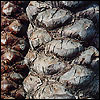 |
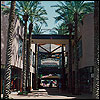 |
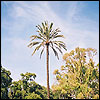 |
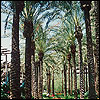 |
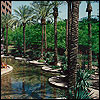 |
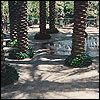 |

